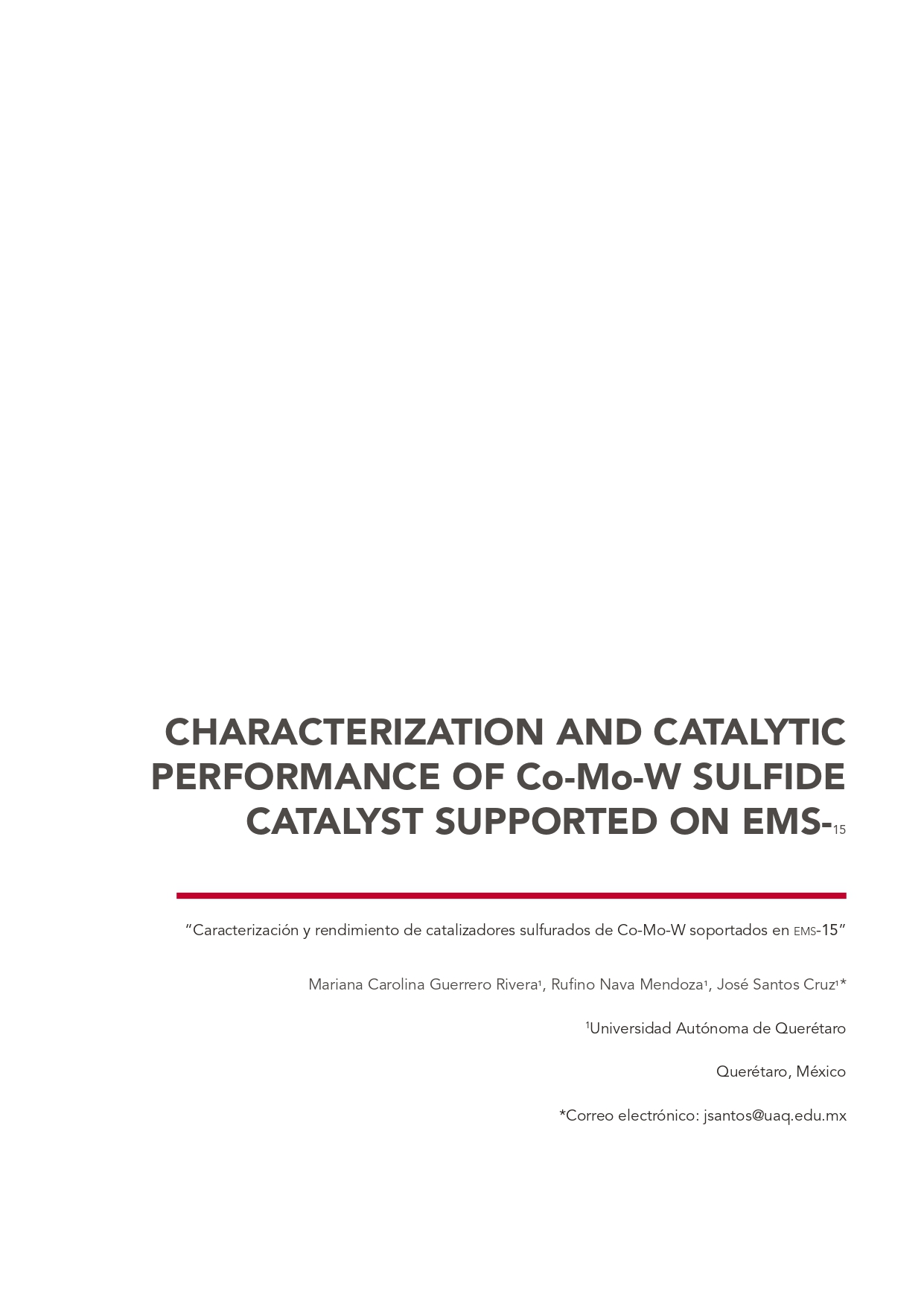Abstract
Hydrodeoxygenation (HDO) catalysts, based on transition metal sulfides (Co-Mo-W) and supported on mesoporous silica sponge (EMS-15), have been synthesized and characterized by different methods (SEM, TEM, XRD, Micro Raman spectroscopy, DRS-UV-vis and catalytic activity). It has been demonstrated that the use of mesoporous silica sponge has an advantage with respect to the use of others silica materials for the preparation of supported catalysts for hydrodeoxygenation of m-cresol. This is because the presence of highly porous structures has a positive effect over the diffusion processes of the precursors of the active phases on the support, and the final result is a higher catalytic activity for the HDO reactions of m-cresol, even more than commercial catalyst; this activity is also related with the stage of the synthesis process in which the mixture is done.

This work is licensed under a Creative Commons Attribution-NonCommercial 4.0 International License.
Copyright (c) 2022 Perspectivas de la Ciencia y la Tecnología

